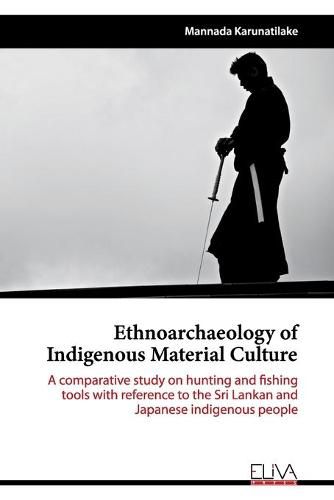Readings Newsletter
Become a Readings Member to make your shopping experience even easier.
Sign in or sign up for free!
You’re not far away from qualifying for FREE standard shipping within Australia
You’ve qualified for FREE standard shipping within Australia
The cart is loading…






Ethnoarchaeology is the study of contemporary societies, their material culture and the material consequences of their behavior for the purposes of formulating and strengthening analogies. The cultural artefacts reveal that the Veddas community is related to the Mesolithic culture in Sri Lanka, whereas the Ainu are related to the Neolithic Jomon culture in Hokkaido, Japan. Even though some anthropological studies have been conducted about these communities, ethnoarchaeological approaches were hardly found on their material culture. The purpose of this comparative study is to examine a pattern of relationship between these two material cultures which mainly focus on the morphological commonalities and differences of hunting and fishing tools of them. To determine the possibilities of a specific pattern of relationship, the data of hunting and fishing tools were gathered from the Veddas at Dambana village, Sri Lanka and the Ainu collection, Hokkaido University Natural History Museum. The Middle-Range-Theory approach was applied for linking the tool morphology with its background and novel hypothesis that the basic composition of hunting and fishing tools are similar in diverse living traditions in the globe is formed upon it. The data collections were compared by Attribute analysis and Ethnographic Analogy for tool composition and tool function respectively. Results demonstrate that the tool type and its morphology are related significantly with the hunting strategies. It concludes that when the tool usage pattern is similar in two different ethnographic communities, it can be formed the same tool composition ultimately.
$9.00 standard shipping within Australia
FREE standard shipping within Australia for orders over $100.00
Express & International shipping calculated at checkout
Ethnoarchaeology is the study of contemporary societies, their material culture and the material consequences of their behavior for the purposes of formulating and strengthening analogies. The cultural artefacts reveal that the Veddas community is related to the Mesolithic culture in Sri Lanka, whereas the Ainu are related to the Neolithic Jomon culture in Hokkaido, Japan. Even though some anthropological studies have been conducted about these communities, ethnoarchaeological approaches were hardly found on their material culture. The purpose of this comparative study is to examine a pattern of relationship between these two material cultures which mainly focus on the morphological commonalities and differences of hunting and fishing tools of them. To determine the possibilities of a specific pattern of relationship, the data of hunting and fishing tools were gathered from the Veddas at Dambana village, Sri Lanka and the Ainu collection, Hokkaido University Natural History Museum. The Middle-Range-Theory approach was applied for linking the tool morphology with its background and novel hypothesis that the basic composition of hunting and fishing tools are similar in diverse living traditions in the globe is formed upon it. The data collections were compared by Attribute analysis and Ethnographic Analogy for tool composition and tool function respectively. Results demonstrate that the tool type and its morphology are related significantly with the hunting strategies. It concludes that when the tool usage pattern is similar in two different ethnographic communities, it can be formed the same tool composition ultimately.